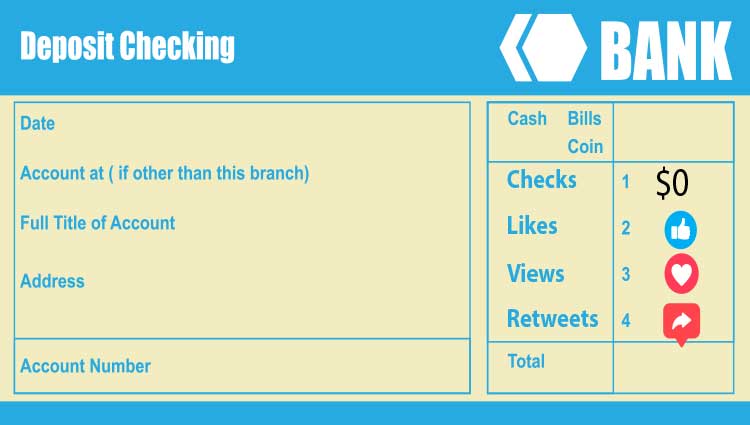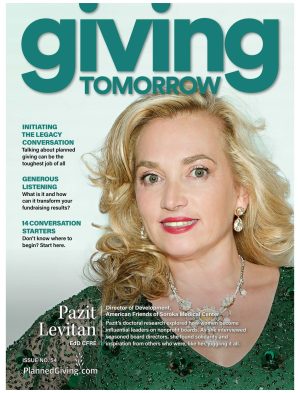When it comes to planned giving, you might say most U.S. churches are getting by on a wing and a prayer, and not much else.
Viken Mikaelian Tweet
It’s time for churches to see the light that is legacy giving. We are the most religious nation in the West. We’re among the wealthiest nations in the world.
Yet our houses of worship consistently rank near the bottom of U.S. charities when it comes to soliciting and closing major and planned gifts.
That’s pretty unbelievable, especially when you consider that pastors have a captive audience for about 45 minutes to an hour every Sunday. I can think of more than one fundraiser who’d probably be willing to commit a mortal sin for that kind of setup!
Pastors have a captive audience every Sunday. I can think of more than one fundraiser who’d probably be willing to commit a mortal sin for that kind of setup!
Viken Mikaelian Tweet
So what’s the issue? We know churches need the money — there’s never-ending maintenance costs on aging buildings (read Ten Reasons Churches Should Have a Ministry of Legacy Giving); growing staff salaries; outreach programs, insurance, utilities and more to consider.
But as the country teeters on the tip of financial uncertainty, most churches seem content to rely on small, annual cash donations for everything — which means their future is more uncertain than ever. Think that’s hyperbole? Then just look at the number of churches, nationwide, that have been forced to close because the congregation shrank, or the donations dried up. There’s probably more than one near you.
Sure, there are exceptions to the rule. And there are faith-based organizations (like the Salvation Army) that are pioneers in church planned giving programs. But for the most part, our religious institutions seem to build their foundations on sand, not bedrock.
Shrinking Congregations, Smaller Donations
Even though Americans still direct most of their philanthropic dollars to their churches over other causes, the numbers drop each year. Nonprofit Source reports that:
- 37% of regular church attendees and Evangelicals don’t give money to church.
- 17% of American families have reduced the amount they give to their local church.
- 7% of church goers have dropped regular giving by 20% or more.
- Only 5% tithe (give 10 percent of one’s earnings), and 80% of Americans only give 2% of their income.
- Christians are giving at 2.5% of income; during the Great Depression it was 3.3%.
And studies show that since the Covid-19 pandemic, shrinking congregations lost even more members. According to the Pew Research Center, “one-in-five U.S. adults say they now attend religious services in person less often than they did before the pandemic.”
That’s a big problem if the collection plate is the main source of your organization’s funding.
That’s a big problem if the collection plate is the main source of your organization’s funding.
Viken Mikaelian Tweet
But as concerning as these trends are, there’s a simple fix: A sustained, powerful planned giving program.
The Problem Isn’t Just at the Pulpit
While we may joke about the pastors and their captive audiences, the reality is that the problem goes much deeper.
It seems that a majority of the nation’s pastors (and boards, clergy, committees and even congregants) are unfamiliar with planned giving programs and how they work. And that unfamiliarity alone can lead to resistance.
They have no idea how simple it is to give (and receive) a bequest; have never heard of a Donor Advised Fund; and have no idea they can accept a gift of life insurance or a retirement plan that could fund their mission for generations to come.
Maybe that’s because preachers are accustomed to asking for money that will be used immediately to tend to parish needs, and trust to providence for the long term. Or perhaps it’s because they were not trained to be fundraisers, accountants, or tax advisors, and they’re reluctant to preach about topics with which they’re unfamiliar.
But even when board and committee members have financial backgrounds, they often lack the expertise to launch, administer and market a planned giving program.
Congregations, too, are sometimes behind the resistance to planned gifts. There are plenty of churchgoers who object to endowment building on philosophical grounds. Some believe their church should use all resources to fulfill their mission today, rather than save for the future. Others feel that too much financial security is worldly baggage that cushions a church from relying on God to provide.
No matter the reason, it all adds up to the same thing: missed opportunities, and continued demands on existing funding.
God Helps Those Who Launch Planned Giving Programs
As we often say, the best time to start a planned giving program was 25 years ago.
The second best time is now.
As we often say, the best time to start a planned giving program was 25 years ago. The second best time is now.
Viken Mikaelian Tweet
And as I mentioned earlier, churches literally have a captive audience. It’s also the perfect target audience: Although anyone can make a planned gift, many congregations are made up of older parishioners. With age comes wisdom — and a lot more thought about the kind of legacy you want to leave behind. A simple sermon about the benefits of a bequest could work wonders.
But how do you get the board on board? How do you get parishioners to support endowment building?
For starters, the Doubting Thomases can dive into the numbers from experts like Russell James, whose in-depth study of philanthropic giving, published in the June 2020 edition of the UC Davis Law Review, found that including a charitable gift in a will generates a 77 percent increase in annual gifts from the same donors!
Then they can observe the benefits that promoting planned gifts has brought to arts and social welfare organizations, and even to other religious organizations like the aforementioned Salvation Army.
Here’s one final point that should sway the board: Churches start major and planned gift fundraising with a prospect base that would be the envy of many other nonprofits: a mature, geographically concentrated group of people who know and identify with each other, and consider the church to be an integral part of their identities.
Congregations can be swayed on a multi-front effort—through encouragement by the pastor, and by marketing materials that break down the positive data into donor-centric layman’s terms that show both the benefits of a planned giving program, and the benefits to the donor.
What’s the first step? Most churches will need professional advice to make their case for a successful planned giving program. Then follows sustained marketing and the ability to follow-up with donors. But getting started can also be as simple as launching a simple bequest program and having the pastor promote bequests for a couple of minutes each service, and then growing the program from there.
Marketing that Works
Perhaps the biggest hurdle to overcome may be the idea that churches will need to spend money to make money, something anyone who’s worked in marketing or business knows. Again, the data mentioned above will help. And hiring a planned giving marketing team is usually the fastest, most effective way to achieve results. They’ll be able to give the church a goal, a plan, and a timetable. If your budget allows, you may want to consider hiring a full-time fundraiser with planned giving experience (so far, few individual churches hire a full-time planned-giving officer).
Because of church hierarchy, planned gifts are promoted a little differently than they are at other nonprofits. The recognized mouthpiece of the church—the pastor—may convince congregants in a general way that there is a genuine need to build the church’s endowment. But they are unlikely to be comfortable discussing details of the gift plans that will build the endowment.
Therefore, it becomes a two-step process: First is dialogue about the need to build the endowment, initiated by a pastor, board member, or other clergy. That’s followed by marketing materials that support the dialogue and raise the congregation’s awareness of and familiarity with the benefits of planned gifts—for the church, but especially for the donor.
For instance, a regular column in the church bulletin could be dedicated to donor stories. An occasional note from the pastor may point out the fact that a bequest allows a donor to make a much bigger impact than they’d thought possible, with no burden on their day-to-day cash flow. A flier mailed to congregants could point out how gifting a retirement plan also becomes a way to invest in your own legacy. A pamphlet left in the vestibule could illustrate the tax benefits of each type of planned gift. A potluck primer for congregants on the importance of making a will can be used to point out the benefits of church planned giving programs and congregation-focused estate planning.
Perhaps most importantly, a planned giving website gets congregants thinking about possibilities for helping their favorite mission and stretching their donations. Many senior church members are already online—they email their grandchildren, invest online, shop, visit social media … and they expect their favorite organizations to have websites they can use to explore and learn. That’s why it is critical to have such an all-in-one solution available. It should describe all types of planned gifts, from bequests to life insurance, and appreciated property gifts to life-income arrangements. And all the gifts should have corresponding videos, making understanding how they work a breeze for prospects (and your board).
The Gifts Are Out There
Churches don’t need to abandon the collection plate or their commitment to provide social outreach in real time—as long as they also plan for their financial future. It’s time churches understand what other nonprofits already know: The gifts are out there, but most of them aren’t in cash, and planned giving is the best way to get them.
Providing for a new roof and updating the office computers will take even more money tomorrow than it does today. It’s time to show present congregants that an endowment will help relieve future congregations from the dilemma of having to choose one financial priority among many, simply because of a lack of planning (and revenue).
Planned giving donors are already sitting in your pews. They’re attending your services, making annual donations, and getting involved in your mission. They just need to be the shown the light that is legacy giving.
Ready to get started with church planned giving programs for your congregation? Contact us today. We’ve been helping ministries of all shapes and sizes create robust, simple, successful planned giving programs for more than 20 years.
Just imagine Harvard’s endowment if all their alumni visited campus each Sunday morning to attend a weekly reunion gathering.
Just imagine Harvard’s endowment if all alumni visited campus each Sunday to attend a weekly reunion.
Viken Mikaelian Tweet
In fact, Harvard would love what your church has.







One Response
Please share this article with your ministry.